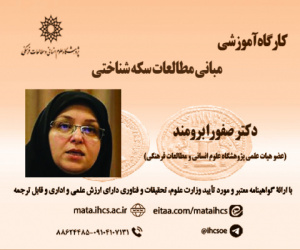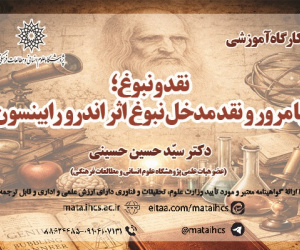خواننده الگو در تفاسیر قرآن کریم (مقاله علمی وزارت علوم)
درجه علمی: نشریه علمی (وزارت علوم)
آرشیو
چکیده
این مطالعه به تبیین و کاربرد نظریه خواننده الگوی اُمبرتو اِکو، منتقد و نظریه پرداز ادبیِ معاصر، در فرآیند تفسیر قرآن می پردازد. برپایه نگرش وی هر نویسنده ای، هنگام نگارش، برای متن خود خواننده ای مفروض در ذهن دارد که البته با مخاطَبانِ عینیِ وی متفاوت است: نویسنده با توجه به ویژگی های زبانیِ متنِ مقصد و جامعه هدفی که متن در آن عرضه می شود این خواننده مفروض را طراحی می کند. وی این خواننده مفروض را خواننده الگو می نامد و معتقد است که مخاطبانِ متن برای فهم بهترِ آن باید از این خواننده درکی داشته باشند. از این منظر، طراحی خواننده الگو بخشی از فرآیند تفسیر است؛ به این معنا که مفسر بعد از آن که معنای متن را دریافت، آن را به خواننده الگو عرضه می کند و این گونه است که متن آماده ارائه به جامعه مخاطبان می شود. با بهره جویی از این مبنا می توان گفت شناخت خواننده الگو هم چون مرحله ای از فرآیند تفسیر می تواند برای شناخت دقیق ترِ فرآیند تفسیر ضروری باشد. ازاین رو ضروری است که نقش خواننده الگو را در شکل گیری متنِ تفسیری هم چون مقدمه ای بر تفسیر تحلیل کنیم. پیش ازاین برونو اوزیمو، نظریه پرداز مطالعات ترجمه، دیدگاه های اُمبرتو اِکو در این زمینه را از حوزه نشانه شناسی به حوزه مطالعات ترجمه وارد، و بومی سازی کرده است. ازآن جا که ترجمه نیز نوعی تفسیر محسوب می شود می توان گفت که اکنون زمینه برای ورود چنین مباحثی به حوزه مباحث نظری تفسیرِ قرآن کریم فراهم است. مطالعه کنونی کوششی برای همین منظور، یعنی بومی سازی نظریه خواننده الگو و توجه به استلزامات آن در حوزه تفسیر قرآن کریم است.The Model Reader in Qur’anic Exegesis
Quranic interpretation, like any hermeneutic process, involves the interpreter’s movement from the source text (the Quran) to the interpretive text (the exegete’s output). In other words, Qur’anic exegesis, as a dynamic hermeneutic process, entails the interplay of three core elements: the sacred text, the exegete, and the target audience. This process unfolds in several stages. First, the interpreter develops an understanding of the Quran by drawing on their epistemological framework. To convey this understanding to an audience, the interpreter must then structure it coherently. Once formulated, the interpretive meaning takes tangible shape—yet challenges may arise in presenting it to the community. Addressing these challenges constitutes the third stage of the process. In the second stage, the interpreter prepares their understanding for reception through two key actions: (1) adopting a model reader and (2) determining the balance between the statement’s general acceptability and its validity or adequacy. In such a situation, Umberto Eco’s semiotic theory of the "model reader" could be useful to examine the pivotal role of the reader in shaping interpretive texts. Eco posits that a text carries not fixed meanings but a network of potential significations, actualized only through engagement with its model reader—a hypothetical construct embodying the linguistic, cultural, and epistemic competencies required for interpretation. This study applies Umberto Eco’s model reader theory—originally developed in literary semiotics—to Quranic exegesis. From Eco's perspective, every writer envisions an implicit "model reader" distinct from their actual audience. This hypothetical reader is shaped by the linguistic and sociocultural context of the text. Recognizing the model reader, Eco argues, enhances textual comprehension. Thus, designing such a reader becomes integral to interpretation: after deriving meaning, the interpreter presents it to the model reader, bridging the gap between text and audience. Understanding this construct is therefore vital for analyzing the interpretive process itself. Applied to Qur’anic exegesis, this framework elucidates how exegetes navigate key dilemmas: - How do they balance audience expectations (e.g., accessibility vs. scholarly depth) with fidelity to the source text? - What factors influence their design of a model reader? - And how might this reader manifest in stylistic choices, commentary length, or source selection? Building on Bruno Osimo’s adaptation of Eco’s theory to translation studies—a field akin to interpretation—this study explores its implications for Quranic exegesis. By synthesizing Eco’s and Osimo’s frameworks, we examine how Quranic interpreters construct their model readers and address questions such as: Why do Quranic interpreters create distinct model readers, and what needs drive this process? How can these model readers be identified based on textual and contextual features? What relationship exists between a model reader of an interpretation and its real-world audience? To address these questions, we first outline Eco’s model reader theory and Osimo’s translation-process insights. We then analyze existing Quranic commentaries to identify the traits interpreters likely attribute to their model readers. An interpreter’s model reader emerges from the interplay of linguistic features, cultural contexts (source and target), and the audience’s interpretive needs, all reflected in shared textual codes. The interpreter begins with objective readers in mind, synthesizing them into an idealized model. This model, in turn, influences the interpreter’s engagement with the Quran’s linguistic structure, cultural milieu, and the target audience’s expectations. Crucially, while the model reader responds to societal conditions, the interpreter retains agency in selecting which societal factors to prioritize. By examining these dynamics, this study aims to advance theoretical discourse on Quranic interpretation, offering a framework to analyze how exegetes navigate the interplay between text, reader, and context.









